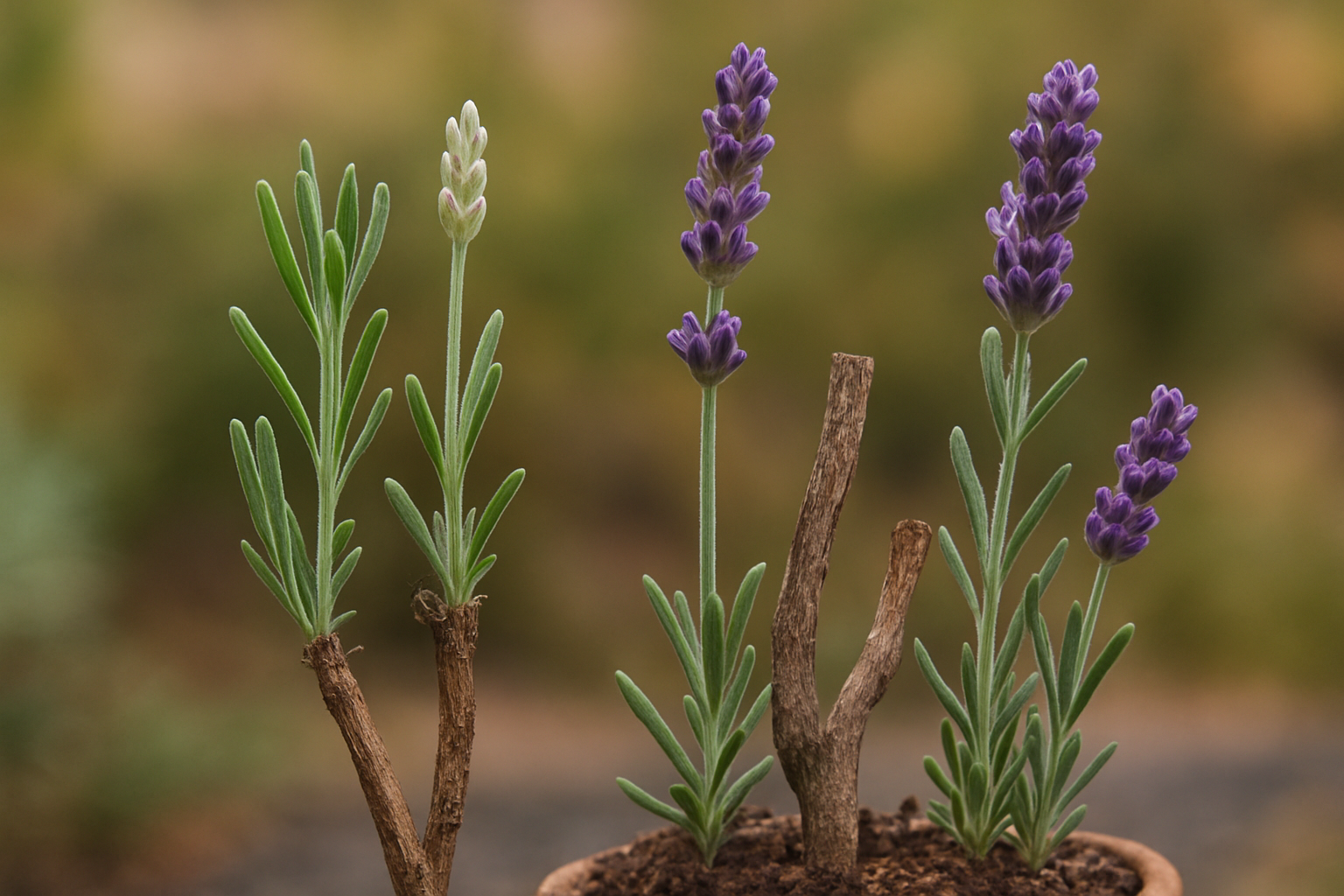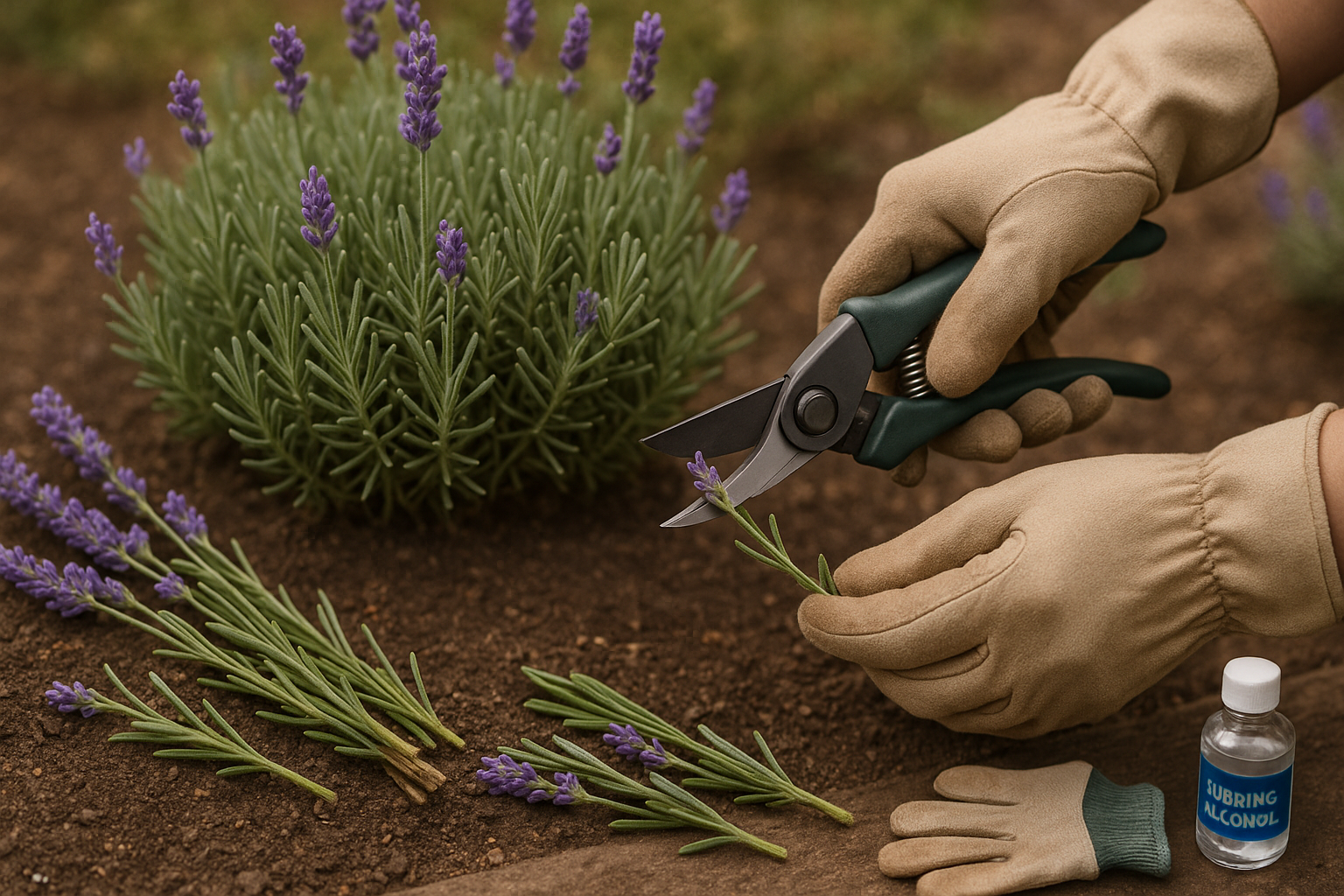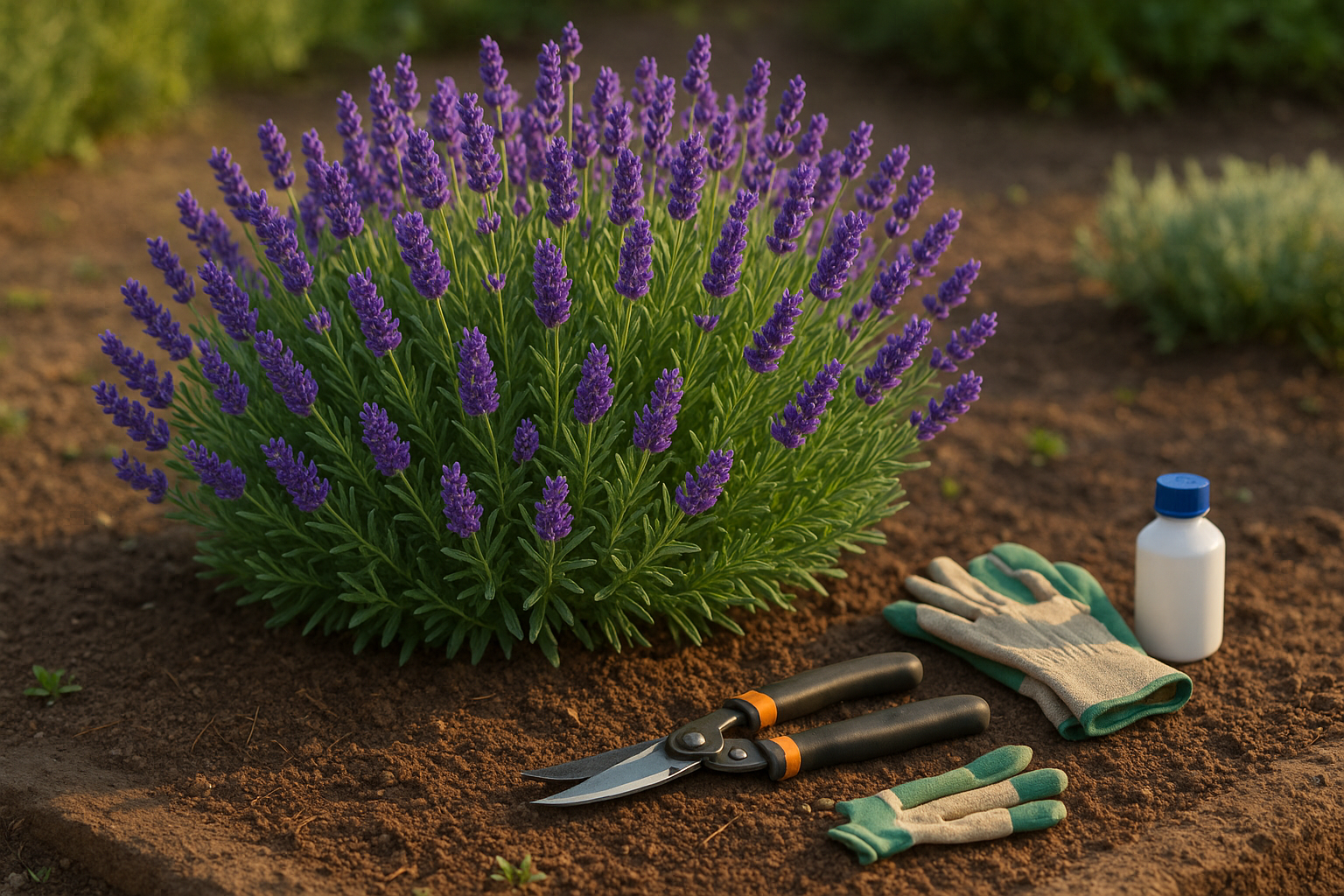Why Pruning Lavender is Important
Pruning lavender is essential for keeping your plants healthy, vibrant, and beautiful year after year. Many new gardeners worry that cutting back their lavender will harm it, but regular pruning actually does the opposite—it helps prevent the plant from becoming woody and unproductive.
By removing the older, spent growth each season, you encourage your lavender to produce fresh stems and more abundant, fragrant blooms the following spring and summer. Pruning also shapes the plant, preventing it from sprawling out or developing bare, leggy spots in the center, and helps your garden look polished throughout the growing season.
Some people believe that lavender doesn’t need much attention or that it should be left to grow wild, but without a good annual trim, the plant’s center will start to die back and overall blooming will drop off fast. On the other hand, aggressive pruning is rarely recommended—never cut into old, woody stems, as lavender can struggle to bounce back from cuts that deep.
The best approach is to trim about a third of the plant’s bushy new growth in late summer or early fall, leaving enough green above the woody base. This simple habit only takes a few minutes, and your reward is a healthier plant that stays compact and full, lives much longer, and puts on a stunning floral show.
If you’ve hesitated to prune before, give it a try—your lavender will thank you with years of color, fragrance, and tidy garden charm.
When to Prune Lavender

Pruning lavender at the right time is key to keeping your plants healthy, vibrant, and full of blooms. The best times to prune are early spring, just as new growth appears, and again in late summer or early fall, after the main flowering period.
Pruning in spring encourages fresh shoots and a fuller shape, while trimming after the summer bloom helps the plant focus on storing energy for winter rather than setting seeds. However, timing varies depending on the type of lavender you’re growing.
Pruning Different Types of Lavender
English lavenders (Lavandula angustifolia) are hardy and can handle both spring and light late summer pruning. In cooler climates, finish pruning by early fall so the plant has time to harden off before winter.
Non-English varieties, like French and Spanish lavenders, are less cold tolerant and should never be pruned late in the season; stick to shaping in early spring to avoid winter dieback.
If You Missed the Ideal Pruning Window
If you missed the ideal window, don’t panic—just wait until early spring to prune, removing any dead or woody stems and shaping the plant gently. Avoid hard pruning in late fall or winter, as cold weather can damage freshly cut stems and cause dieback.
Why Regular Pruning Matters
Remember, regular pruning not only keeps plants looking tidy but also prevents them from becoming leggy, woody, and less productive.
For gardeners in warmer regions, you may have a bit more flexibility, but always err on the side of caution and give lavender plenty of time to recover before the first frost.
With a little attention to timing, your lavender will reward you year after year with lush growth and bountiful blooms.
Types of Lavender and How They Affect Pruning
Lavender comes in several popular varieties, each with distinct traits that influence how and when you should prune them.
English lavender (Lavandula angustifolia) is prized for its hardiness and classic fragrance, making it the most common garden choice. It responds well to a hard prune in late summer after flowering, which encourages a fuller shape and more blooms the following year.
French lavender (Lavandula dentata), recognized by its serrated leaves and lighter scent, grows faster but is less cold-hardy. It benefits from lighter, more frequent pruning—trimming several times throughout the growing season helps maintain a neat shape and encourages healthy new growth.
Spanish lavender (Lavandula stoechas), distinguished by its rabbit-eared flower heads, prefers similar light, regular trims, as aggressive pruning can stress this tender variety.
Regardless of the type, older, woody lavender can often be revitalized using a technique called selective rejuvenation. This involves cutting back up to a third of the plant, focusing on removing the thickest, leafless stems to stimulate new shoots. However, avoid cutting into bare wood with no visible green growth, as lavender rarely sprouts from old wood and you could risk killing the plant.
For very mature or neglected plants, pruning in stages over a few seasons is safer—shape and tidy the first year, then gradually cut further back each subsequent year as new growth appears.
By recognizing your lavender’s variety and adjusting your pruning approach, you’ll keep your plants vibrant, flowering, and healthy for many seasons.
Step-by-Step Guide to Pruning Lavender (Shape & Tools)

Pruning lavender doesn’t have to be intimidating if you have the right tools and a clear process. Start by gathering your essentials: a sharp pair of pruning shears, gardening gloves to protect your hands from scratches, and some disinfectant like rubbing alcohol to clean your tools before and after trimming. This helps prevent the spread of disease from plant to plant.
Begin pruning as soon as flowering is over, ideally in late summer or early fall. First, look for woody stems—the thick, grayish ones toward the base. Avoid cutting into this old wood, as it doesn’t regrow easily and could leave your lavender looking sparse or even damaged. Instead, focus on the green, flexible stems above where soft new growth emerges.
Gently shape the plant into a tidy mound or cushion, snipping back about one-third of the height but always leaving a couple of inches of green growth. Use your shears to make clean, diagonal cuts just above a set of healthy leaf nodes, which encourages bushier growth next season.
Remember, never remove all the green foliage, and never cut down to bare woody stems or into clearly dead wood, since this can permanently stunt your lavender. Check over your work as you go, regularly stepping back to ensure a consistent, pleasing shape. Avoid the temptation to over-prune, especially on older plants—less is often more.
After pruning, clean your shears with disinfectant again to keep them in good condition. With patience and these practical steps, you’ll help your lavender thrive, producing lush, fragrant blooms year after year.
Common Lavender Pruning Mistakes (And How to Avoid Them)
Pruning lavender might seem straightforward, but there are several common mistakes that can leave your plants struggling. One frequent issue is pruning too late in the season—cutting back lavender after late summer or early fall can encourage new growth that’s vulnerable to winter frost, risking damage or plant loss.
Another big pitfall is cutting into old, woody stems. Lavender doesn’t regrow well from old wood, so always trim just above green, leafy growth to ensure vigorous returns next season.
Using dull or dirty shears can also harm your lavender, crushing stems and inviting disease. Make sure your tools are sharp and clean for crisp, healthy cuts.
Neglecting to prune at all is just as bad; left alone, lavender becomes leggy, woody, and blooms less. If your plant already looks leggy or has bare woody patches, begin with gentle shaping and avoid cutting too deep at once—gradual pruning over a couple of years can rejuvenate tired plants.
Damaged or dying stems should be removed promptly to improve airflow and prevent disease.
Remember, annual pruning is not just cosmetic—it’s essential maintenance that keeps lavender bushy, productive, and beautiful. Skipping it can lead to plants that are more susceptible to pests, produce fewer fragrant flowers, and have a much shorter lifespan.
By staying on top of yearly pruning and sidestepping these common mistakes, you’ll ensure your lavender thrives season after season.
Lavender Pruning FAQs
Pruning lavender can feel intimidating for beginners, but it’s easier than you might think. A common question is how far back to cut lavender. Aim to trim about one-third of the plant’s height, always avoiding cutting into the old woody stems at the base, since these rarely regrow.
Wondering when to prune? The best time is just after flowering, usually in late summer or early fall. However, avoid heavy pruning in winter—cold weather can damage exposed branches, so only remove any dead or diseased growth during this time.
If you’re not sure what to do with prunings, don’t toss them! Use healthy clippings to propagate new lavender by rooting them in water or potting mix, or simply let them dry and add them to potpourri or sachets.
Remember, light annual pruning keeps the plant bushy, productive, and less likely to become leggy. Add it to your garden routine each year for lush, long-lasting lavender.
